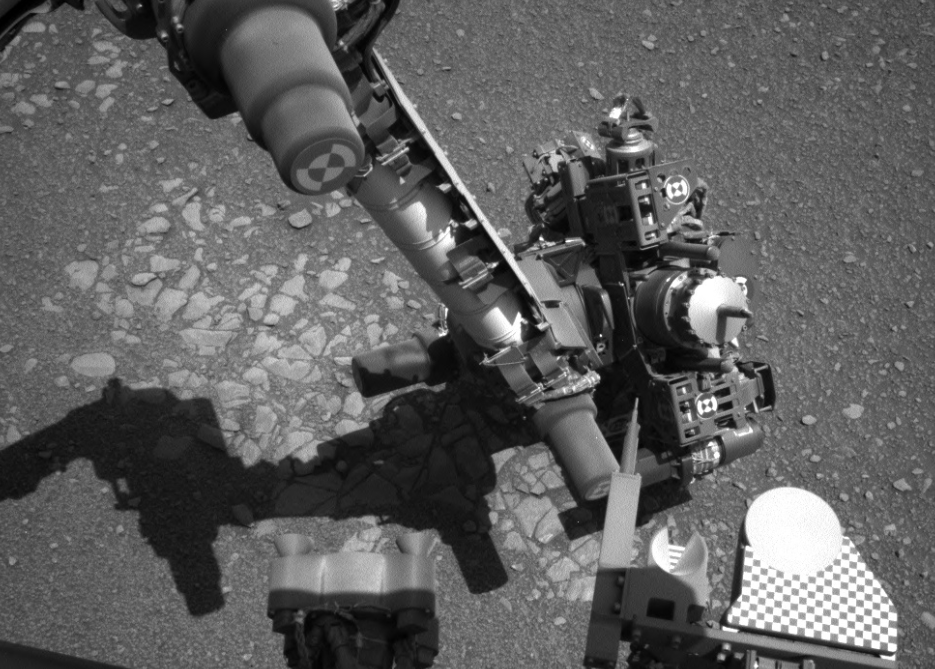Nasa Mars rover discovers gas that suggests recent alien life
Methane must have been produced recently as molecules break down within a few centuries

Your support helps us to tell the story
From reproductive rights to climate change to Big Tech, The Independent is on the ground when the story is developing. Whether it's investigating the financials of Elon Musk's pro-Trump PAC or producing our latest documentary, 'The A Word', which shines a light on the American women fighting for reproductive rights, we know how important it is to parse out the facts from the messaging.
At such a critical moment in US history, we need reporters on the ground. Your donation allows us to keep sending journalists to speak to both sides of the story.
The Independent is trusted by Americans across the entire political spectrum. And unlike many other quality news outlets, we choose not to lock Americans out of our reporting and analysis with paywalls. We believe quality journalism should be available to everyone, paid for by those who can afford it.
Your support makes all the difference.Nasa's Curiosity rover has discovered high amounts of methane gas on the surface of Mars that suggests the possibility of alien life on the planet.
The discovery of the gas is significant because on Earth methane is usually produced by living things.
Any methane detected now must have been released recently as sunlight and chemical reactions would break up the molecules within a few centuries.
The data from the Curiosity rover arrived back on Earth on Thursday, and by Friday, scientists working on the mission were excitedly discussing the news.
“Given this surprising result, we’ve reorganised the weekend to run a follow-up experiment,” Ashwin Vasavada, the project scientist for the mission, wrote to the science team in an email that was obtained by The New York Times.
The mission’s controllers on Earth sent new instructions to the rover on Friday to follow up on the readings, bumping previously planned science work. The results of these observations were expected back on the ground on Monday.
People have long been fascinated by the possibility of aliens on Mars. But Nasa’s Viking landers in the 1970s photographed a desolate landscape.
Two decades later, planetary scientists thought Mars might have been warmer, wetter and more habitable in its youth around four billion years ago.
Now, they are entertaining the notion that if life ever did arise on Mars, its microbial descendants could have migrated underground and persisted.
On Earth, microbes known as methanogens thrive in places lacking oxygen, such as rocks deep underground and the digestive tracts of animals, and they release methane as a waste product. However, geothermal reactions devoid of biology can also generate methane.
It is also possible that the methane is ancient, trapped inside Mars for millions of years but escaping intermittently through cracks.
Nasa announced the methane detection in a statement on Saturday but called it an “early science result.”
A Nasa spokesperson added: “To maintain scientific integrity, the project science team will continue to analyse the data before confirming results.”
Scientists first reported detections of methane on Mars a decade and a half ago using measurements from Mars Express, an orbiting spacecraft built by the European Space Agency and still in operation, as well as from telescopes on Earth.
However, those findings were at the edge of the detection power of these tools, and many researchers thought the methane might just be a mirage of mistaken data.
When Curiosity arrived on Mars in 2012, it looked for methane and found nothing, or at least less than 1 part per billion in the atmosphere. Then, in 2013 it detected a sudden spike, up to 7 parts per billion that lasted at least a couple of months. The methane ebbed away.
The measurement this past week found 21 parts per billion of methane, or three times the 2013 spike.
Even before that discovery, the mystery of methane had been deepening.
Curiosity scientists developed a technique that enabled the rover to detect even tinier amounts of methane with its existing tools. The gas seems to rise and fall with the red planet’s seasons.
A new analysis of old Mars Express readings confirmed Curiosity’s 2013 findings. One day after Curiosity reported a spike of methane, the orbiter, passing over Curiosity’s location, also measured a spike.
But the Trace Gas Orbiter, a newer European spacecraft launched in 2016 with more sensitive instruments, did not detect any methane at all in its first batch of scientific observations last year.
Marco Giuranna, a scientist at the National Institute for Astrophysics in Italy, who leads the Mars Express orbiter’s methane measurements, said scientists on the Curiosity, Mars Express and Trace Gas Orbiter missions had been discussing the latest findings. He confirmed he had been told of the reading of 21 parts per billion but added that the finding was preliminary.
He said Mars Express passed over Gale Crater, the 96-mile-wide depression that Curiosity has been studying, on the same day that Curiosity made its measurements. There are other observations on earlier and subsequent dates, Mr Giuranna said, including joint observations with the Trace Gas Orbiter.
“A lot of data to be processed,” Mr Giuranna said in an email. “I’ll have some preliminary results by next week.”
Rovers scheduled for launch next year – one by NASA, one by a Russian-European collaboration – will carry instruments designed to search for the building blocks of life, although neither is designed to answer the question of whether there is life on Mars today.
New York Times
Join our commenting forum
Join thought-provoking conversations, follow other Independent readers and see their replies
Comments